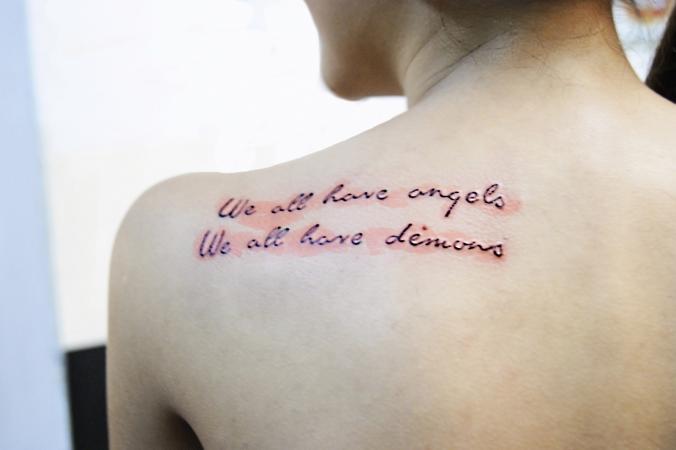

#Black ink infected tattoo full#
Moreover, complications such as coinfection with pathogens such as methicillin-resistant Staphylococcus aureus may pose a further challenge to a patient’s full recovery.Īnd even if the tattoo parlor is clean as a whistle, it can’t really know whether its ink is contaminated. Antibiotic choices are limited by the susceptibility profile of the organism, and prolonged treatment may be necessary to clear the infection. Because of these diagnostic challenges, infections may initially be misdiagnosed and patients may receive ineffective treatments. Depending on the medium used, it can take up to 6 weeks to identify the organism.
#Black ink infected tattoo skin#
Recovery of mycobacteria may be challenging, often requiring a skin biopsy, and special culture mediums may be required for diagnosis. Symptoms can be difficult to recognize, since other conditions (e.g., allergic reactions) may present with similar findings. Commonly reported symptoms of such infections associated with tattoo ink include lesions consisting of red papules solely in areas where the contaminated ink has been applied. Nontuberculous mycobacterial infections may be difficult to diagnose and treat. Several features of nontuberculous mycobacteria make it particularly important to increase awareness about these types of tattoo ink–related infections. First, the infections that their patients were getting were bad for a couple of reasons: That’s simply not good enough, the doctors who treated these patients in New York argue. The actual practice of tattooing is regulated by local jurisdictions. However, because of other competing public health priorities and a previous lack of evidence of safety problems specifically associated with these pigments, FDA traditionally has not exercised regulatory authority for color additives on the pigments used in tattoo inks. The pigments used in the inks are color additives, which are subject to premarket approval under the Federal Food, Drug, and Cosmetic Act. Basically, the FDA waits for a problem to happen, and then tries to address it, usually by recalling the material. In the United States, each state has its own rules and regulations governing tattoo shops, but the ink itself isn’t really regulated.

In Europe, a study of tattoo ink looked at 58 bottles and found that ten percent of the unopened were contaminated with bacteria, as were 17 percent of the previously used stock bottles. Since then, several other cases have emerged: 48 patients in France, 24 cases in the state of Washington, two cases is Iowa and one in Colorado, 11 cases in San Antonio. The first report was in 2003, when a butterfly tattoo came along with a nasty infection. This is not the first time the bacteria has shown up in tattooing. The bacteria in question is Mycobacterium chelonae, a bacteria commonly found in tap water.

No one really knows, though, how the bacterium got there. It must have crept in at some stage in the manufacturing process. It was, in one of the three unopened bottles they tested. They called in the FDA, which requested samples from the ink manufacturer and had the CDC check to see whether the bacterium behind the infections was there. Since the tattoo artist ran a tidy shop-a health department inspection raised no red flags there-the investigators focused their attention on the ink. The new color had come from a trade show in Arizona, and this particular artist was the only person using it in the county, as well as the only one whose clients came down with the rash. Turns out, it wasn’t the standard tattoo rash.

But this time, the usual treatments weren’t working. Reactions to tattoos aren’t uncommon-you did just inject a needle into your skin thousands of times. Patients were coming in with odd rashes where they had recently gotten tattoos. Earlier this year, doctors in Rochester, N.Y., started seeing a pattern.


 0 kommentar(er)
0 kommentar(er)
